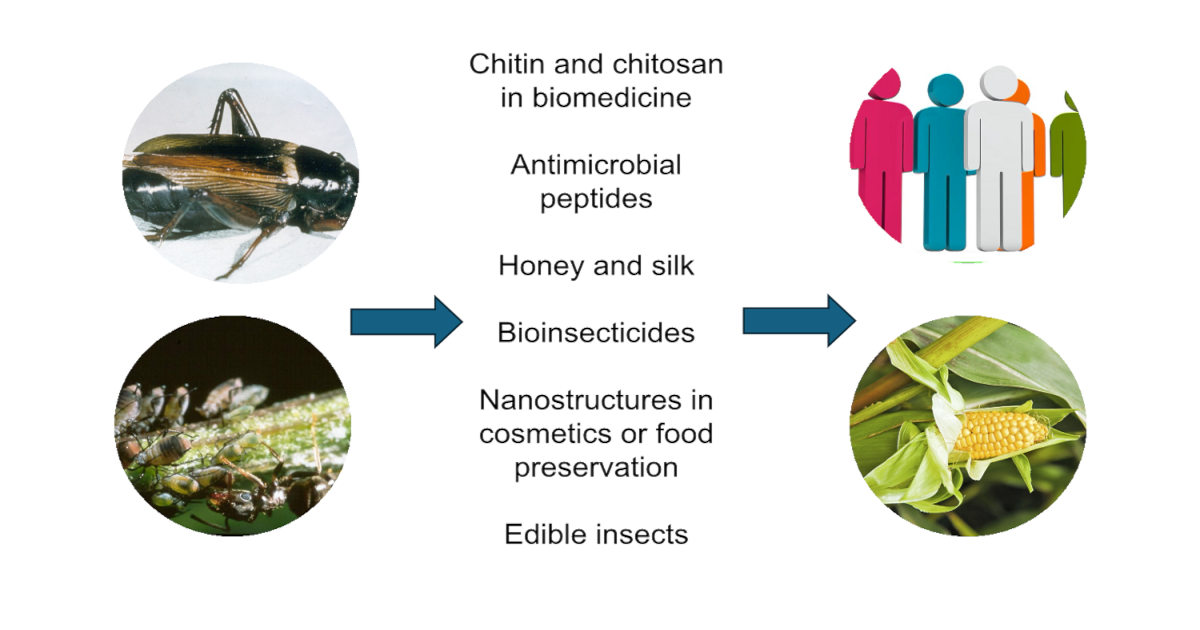Insects: A Unique Bioresource for Agriculture and Humanity
A special issue of Insects (ISSN 2075-4450).
Deadline for manuscript submissions: 31 December 2025 | Viewed by 5510

Special Issue Editor
Interests: entomology; ecology; endocrinology; invertebrate biochemistry and physiology
Special Issues, Collections and Topics in MDPI journals
Special Issue Information
Dear Colleagues,
Insects represent the largest group within the arthropod phylum and can be found across all continents and in almost every habitat. Insects play important roles in ecosystems, including pollination, pest control, waste utilization, soil improvement, and wildlife nutrition. Human interactions with insects include exploiting insects for practical uses, such as in food, textiles, or dyes, but also in medicine, science, and technology. Humans have been utilizing natural resources from insects since the Stone Age. One prominent example concerns honeybees, whose products have been used for more than 8000 years. Additionally, silk from the cocoon of the silkworm larva has been used to make clothing since 3500 BCE.
Over the past 25 years, research in the field of insect biotechnology has intensified considerably. Scientists are working on novel active insect ingredients for medicine (e.g., antimicrobial agents), sustainable methods of plant protection (e.g., bioinsecticides), and applications for industrial biotechnology (e.g., enzymes and raw materials such as chitin and chitosan). Recently, biomass-based nanomaterials have represented a key area of research. Chitin and chitosan nanostructural applications have been reported in areas such as biomedical devices, cosmetics, textile coatings, water filtration, food preservation, and food packaging. Chitosan nanoparticles are also being used in sustainable agriculture.
Insects have a high food conversion rate. Crickets, for example, require six times less feed than cattle to produce the same amount of protein. Edible insects contain high-quality protein, vitamins, and essential amino acids that could benefit humans, pets, and farm animals. Insects as a sustainable food source require advanced farming techniques, as well as sophisticated processing methods to ensure food quality and safety.
We invite you to contribute original research articles and critical reviews discussing both basic and applied approaches to the use of insect primary and secondary compounds as bioresources in agriculture and human welfare. Articles on insects as model animals or insect cell lines in biomedicine are also welcome.
Prof. Dr. Klaus H. Hoffmann
Guest Editor
Manuscript Submission Information
Manuscripts should be submitted online at www.mdpi.com by registering and logging in to this website. Once you are registered, click here to go to the submission form. Manuscripts can be submitted until the deadline. All submissions that pass pre-check are peer-reviewed. Accepted papers will be published continuously in the journal (as soon as accepted) and will be listed together on the special issue website. Research articles, review articles as well as short communications are invited. For planned papers, a title and short abstract (about 250 words) can be sent to the Editorial Office for assessment.
Submitted manuscripts should not have been published previously, nor be under consideration for publication elsewhere (except conference proceedings papers). All manuscripts are thoroughly refereed through a single-blind peer-review process. A guide for authors and other relevant information for submission of manuscripts is available on the Instructions for Authors page. Insects is an international peer-reviewed open access monthly journal published by MDPI.
Please visit the Instructions for Authors page before submitting a manuscript. The Article Processing Charge (APC) for publication in this open access journal is 2600 CHF (Swiss Francs). Submitted papers should be well formatted and use good English. Authors may use MDPI's English editing service prior to publication or during author revisions.
Keywords
- bioinsecticides
- antimicrobial peptides
- insect farming
- chitin and chitosan
- nanostructures
- biomedicine
Benefits of Publishing in a Special Issue
- Ease of navigation: Grouping papers by topic helps scholars navigate broad scope journals more efficiently.
- Greater discoverability: Special Issues support the reach and impact of scientific research. Articles in Special Issues are more discoverable and cited more frequently.
- Expansion of research network: Special Issues facilitate connections among authors, fostering scientific collaborations.
- External promotion: Articles in Special Issues are often promoted through the journal's social media, increasing their visibility.
- Reprint: MDPI Books provides the opportunity to republish successful Special Issues in book format, both online and in print.
Further information on MDPI's Special Issue policies can be found here.






